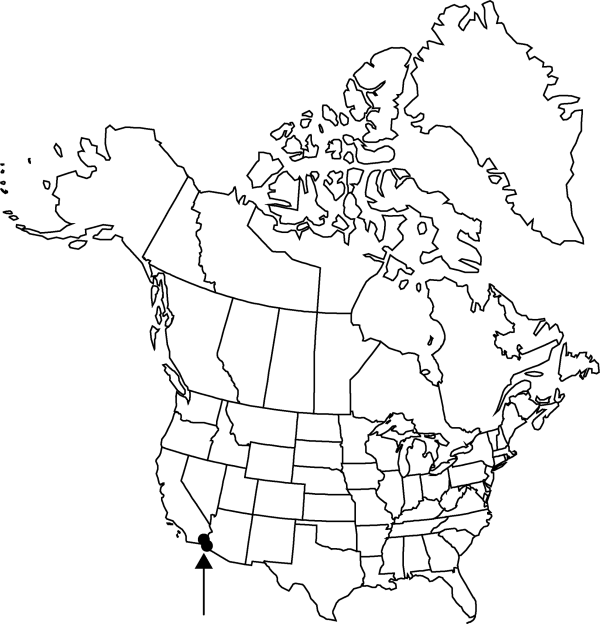Boerhavia triquetra
Proc. Amer. Acad. Arts 24: 69. 1889.
Herbs, annual; taproot tapered, soft or ± woody. Stems erect or ascending, occasionally decumbent, moderately or profusely branched, primarily distally, 1–5 dm, minutely puberulent with bent hairs basally, glabrous or minutely puberulent distally. Leaves mostly in basal 1/2 of plant; larger leaves with petiole 4–8 [–15] mm, blade broadly ovate or oval to lanceolate, 10–21 [–35] × 6–8 [–13] mm (distal leaves smaller, proportionately narrower), adaxial surface usually glabrous, rarely minutely puberulent, abaxial surface paler than adaxial, glabrous, neither surface punctate, base round [obtuse], margins shallowly sinuate, apex acute, obtuse, or round. Inflorescences terminal or axillary, forked ca. 3–6 times ± evenly (or clearly unevenly), diffuse, with sticky internodal bands; branches usually terminating in umbels or flowers borne singly, usually well beyond leaves. Flowers: pedicel 0.3–4.5 mm; bracts at base of perianth quickly deciduous, 2, linear-lanceolate to lanceolate [ovate], 0.5–0.6 mm; perianth whitish to pale-pink or purplish, campanulate beyond constriction, 1 mm; stamens 2–3, included or barely exserted. Fruits 1–7 per umbel, straw colored or gray-brown, obpyramidal, 2.5–3.1 × 1.3–1.9 mm (l/w: 1.6–2.1), base stipelike, apex round-truncate, glabrous; ribs 3–4 (–5), acute or winglike, tapering to pedicel, slightly rugose or undulate near sulci; sulci 0.5–1 times as wide as base of ribs, coarsely transversely rugose, smooth or very faintly papillate.
Phenology: Flowering summer–late fall.
Habitat: Sandy or gravelly areas in deserts
Elevation: [0-]100-300 m
Distribution

Ariz., Calif., Mexico (Baja California), Mexico (Baja California Sur), Mexico (Sonora)
Discussion
Boerhavia triquetra, very narrowly defined here by a predominance of 3- and 4-ribbed fruits, is uncommon in the flora, known to occur only on low deserts near the Colorado River and southward around the Sea of Cortez. The species has few- or 1-flowered terminal inflorescences. Its relationship to, and distinctness from, B. intermedia, needs clarification. In the area of the type locality, Bahia de los Angeles, on the east coast of Baja California, some plants have only 3- and 4-winged fruits, whereas most will have 3-, 4-, and some 5-winged fruits. The five-winged fruits do not differ from those of B. intermedia, a species common on the peninsula. Intergradient plants occur on the peninsula and on islands in the gulf.
Selected References
None.
Lower Taxa
"thin" is not a number."dm" is not declared as a valid unit of measurement for this property.